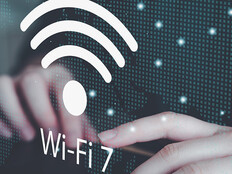How Networks Falter, Then Heal Themselves
One of the biggest responsibilities of network administrators is maintaining network uptime. When an outage occurs, troubleshooting the problem can be a time-consuming process that negatively affects patient outcomes or experiences that depend on the network. Clinicians and hospital administrators and contractors may be unable to fulfill their duties, which can lead to major impacts to patient care and trust in the organization.
Self-healing networks offer an optimized approach to network management that uses artificial intelligence and machine learning (ML) to continuously monitor network performance, analyze traffic patterns, detect potential issues, and take corrective action directly or through administrators to maintain network stability and avoid downtime.
“The need for healing can come from a number of different perspectives; it can be an equipment malfunction, poor deployment, a misconfiguration or changes in network requirements based on organizational changes,” says Larry Lunetta, vice president of AI, security and networking product marketing at HPE Aruba Networking. “And it can also be that the network has been compromised. There could be malicious activity that changes the network in a way that requires remediation.”
“A self-healing network leverages AI-native automation to maintain optimized performance,” says Christian Gilby, senior director of product marketing for AI-native networking at Juniper Networks. “The network identifies the issue, looks at the data and then figures out what’s wrong, and depending on the circumstances either remediates the issue or tells the admin how to resolve it.”
READ MORE: How can healthcare organizations create self-aware and secure IT networks?
What Defines a Self-Healing Network?
The growth of AI and ML technologies is crucial to the development of this networking innovation, but a wider array of technologies is needed for a network to be truly self-healing.
“In addition to capabilities like artificial intelligence and machine learning, you need toolsets that can leverage automation and an infrastructure that can be subject to automation workflows,” says Felipe Fernandez, CTO at Fortinet Federal.
What makes a network self-healing can vary, but it requires networking components including switches, routers, access points and cables that are built to support and respond to the monitoring, analysis, automation and optimization being overseen by the AI and ML solutions. This can also include a software-defined WAN solution to enable a more secure and flexible virtualized network architecture.
Data lakes are typically needed to store all of the data being collected and analyzed, as intense data analysis informs these processes. Given the overall complexity of the network and self-healing processes, generative AI assistants can provide an easy interface for network administrators to interact with to oversee activity on the network.












